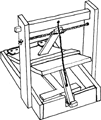Vertebrate Pest Conference: Proceedings

Vertebrate Pest Conference Proceedings: 15th (1992)
Date of this Version
March 1992
Document Type
Article
Abstract
The most significant damage inflicted by birds in Australia is to germinating cereal and to ripening sunflower and fruit crops. The main pests are several native psittacine and corvid species, silvereyes (Zosterops lateralis) and European starlings (Sturnus vulgaris). The economic cost of damage is largely unquantified. While losses to industries as a whole are often low, losses to individual growers may be severe, and losses are distributed patchily in space and time. Shooting is the most widely practiced and most ineffective bird control technique used in Australia. Despite the high numbers of birds killed, damage persists, and disturbance caused by shooting and scare devices may actually increase damage. Trapping and export of native birds is frequently suggested as a solution but would be ineffective for damage control. Illegal poisoning is thought to have caused significant reductions in some parrot populations, but has not prevented crop damage. Decoy feeding shows promise for damage control in winter cereals. One site attracted 4,000 cockatoos for most of the seeding and germination phase. For sunflower, the main problem is rendering the main crop less attractive than the decoy. Netting is cost-effective even at moderate to low levels of bird damage for intensive growing systems with new varieties of high-yielding stonefruit. Research is needed on techniques to assess the cost of damage. The cost-effectiveness of damage control techniques can then be assessed. There is also a need for more studies on the biology of pest birds, in relation to the potential mitigation of crop damage by habitat modification or changes in crop growing practices.

